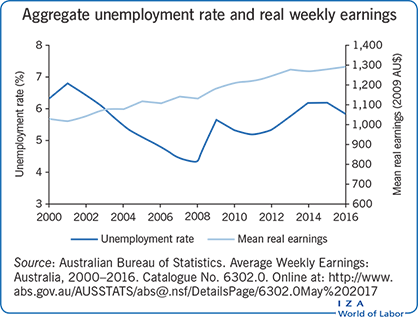Elevator pitch
Since 1991, the Australian economy has experienced sustained economic growth. Aided by the commodities boom and strong public finances, the Australian economy negotiated the global financial crisis without falling into recession. Over this period there were important structural changes, with increasing labor force participation among the elderly and the continuing convergence of employment and unemployment patterns for men and women. However, some recent negative trends include a rise in unemployment, especially long-term unemployment, a deteriorating youth labor market, and a stagnant gender earnings gap.

Key findings
Pros
Australia has not experienced a recession since 1991, leading to strong growth in employment and lower unemployment rates.
Labor force participation of men and women aged 55–64 has increased.
Real average earnings of full-time workers have increased.
Following rising income inequality from the late 1970s to 1990, inequality has remained relatively stable since 2000.
Cons
Despite sustained economic growth, long-term unemployment has increased over the past decade, returning to the relatively high levels of the early 2000s.
Teenage workers face limited labor market opportunities.
The long-term growth in real weekly earnings has been modest.
There has been remarkably little improvement in the gender earnings differential since 2000.